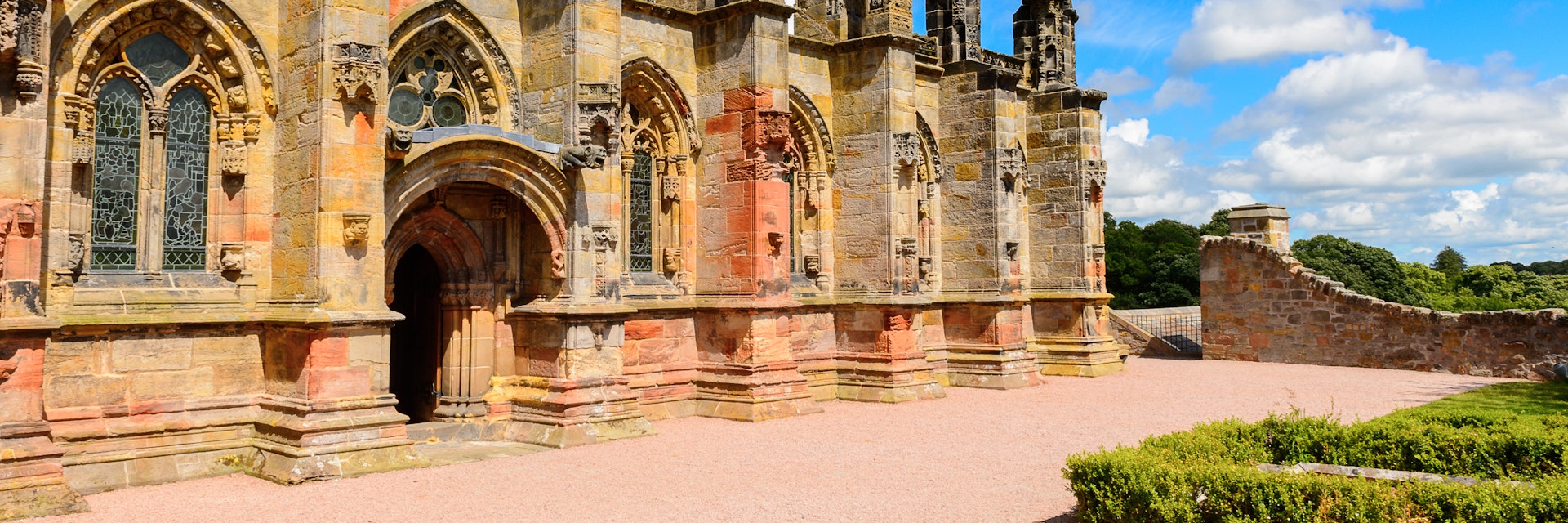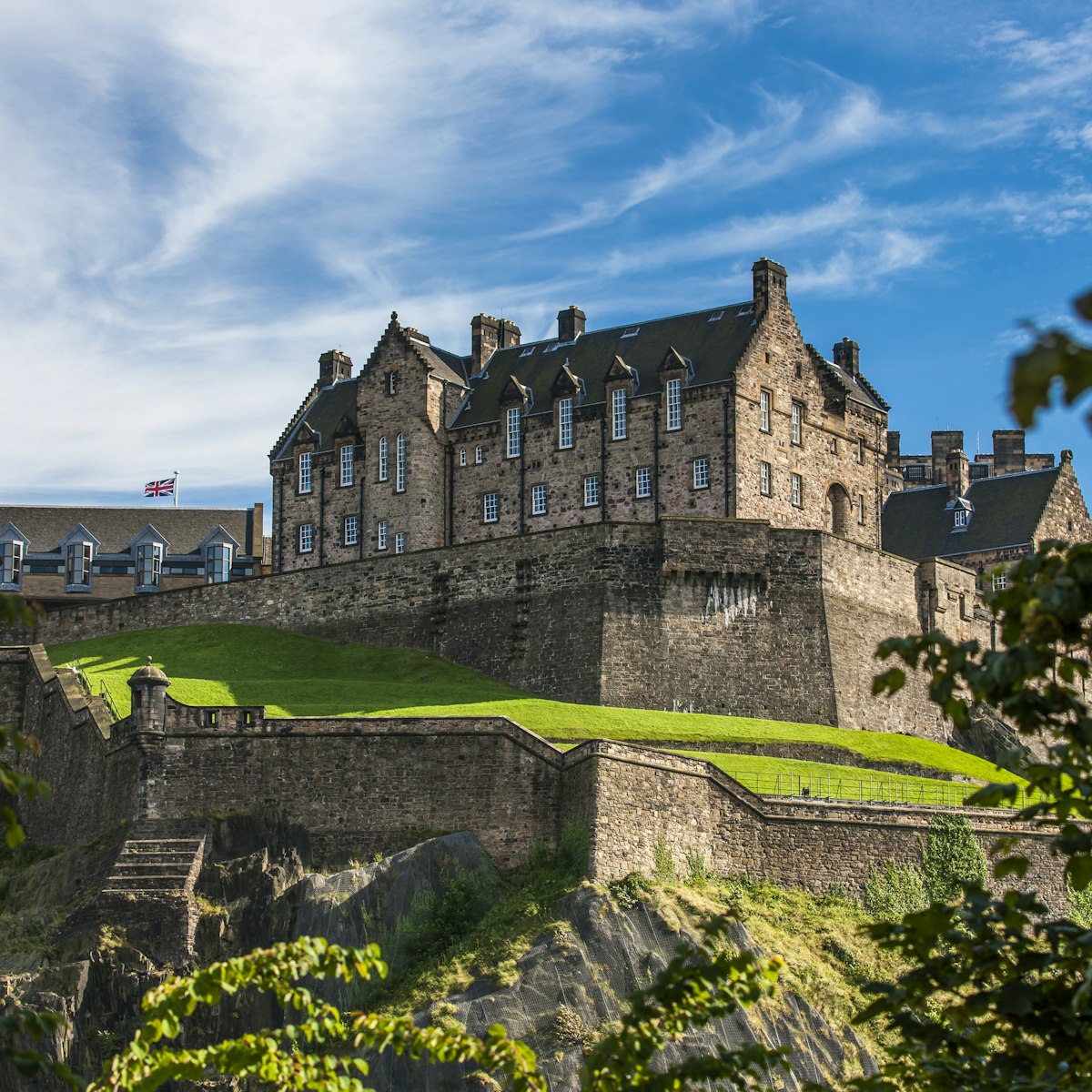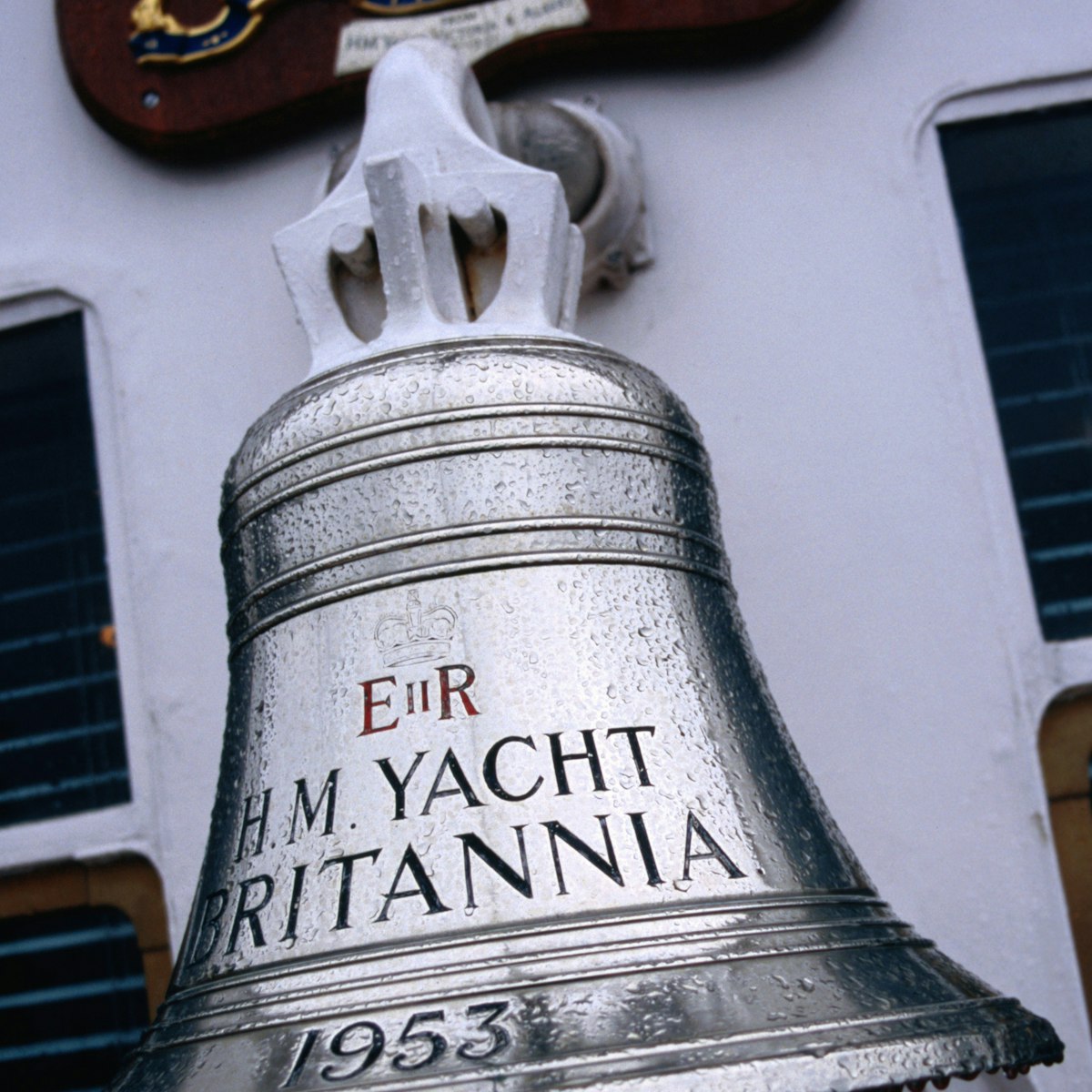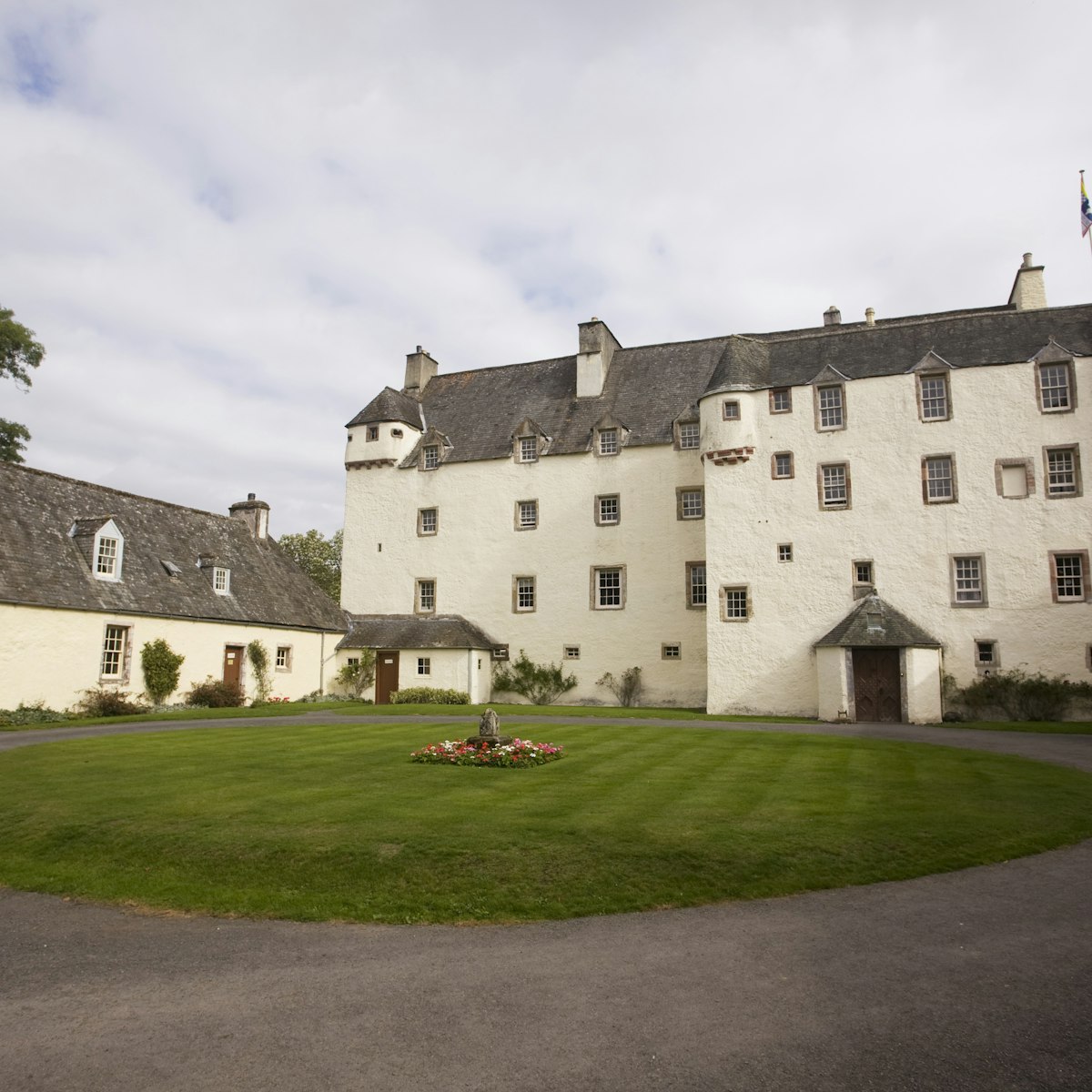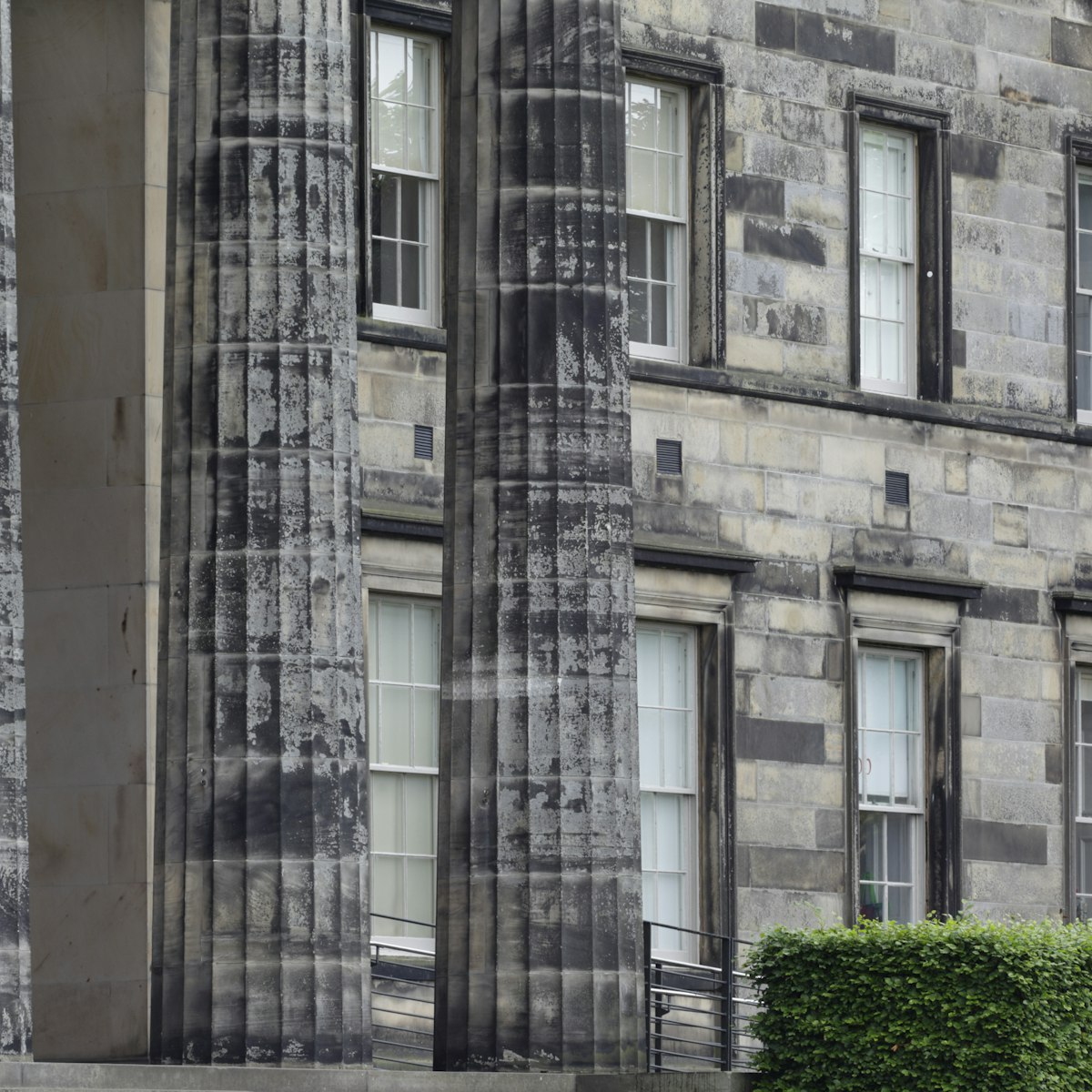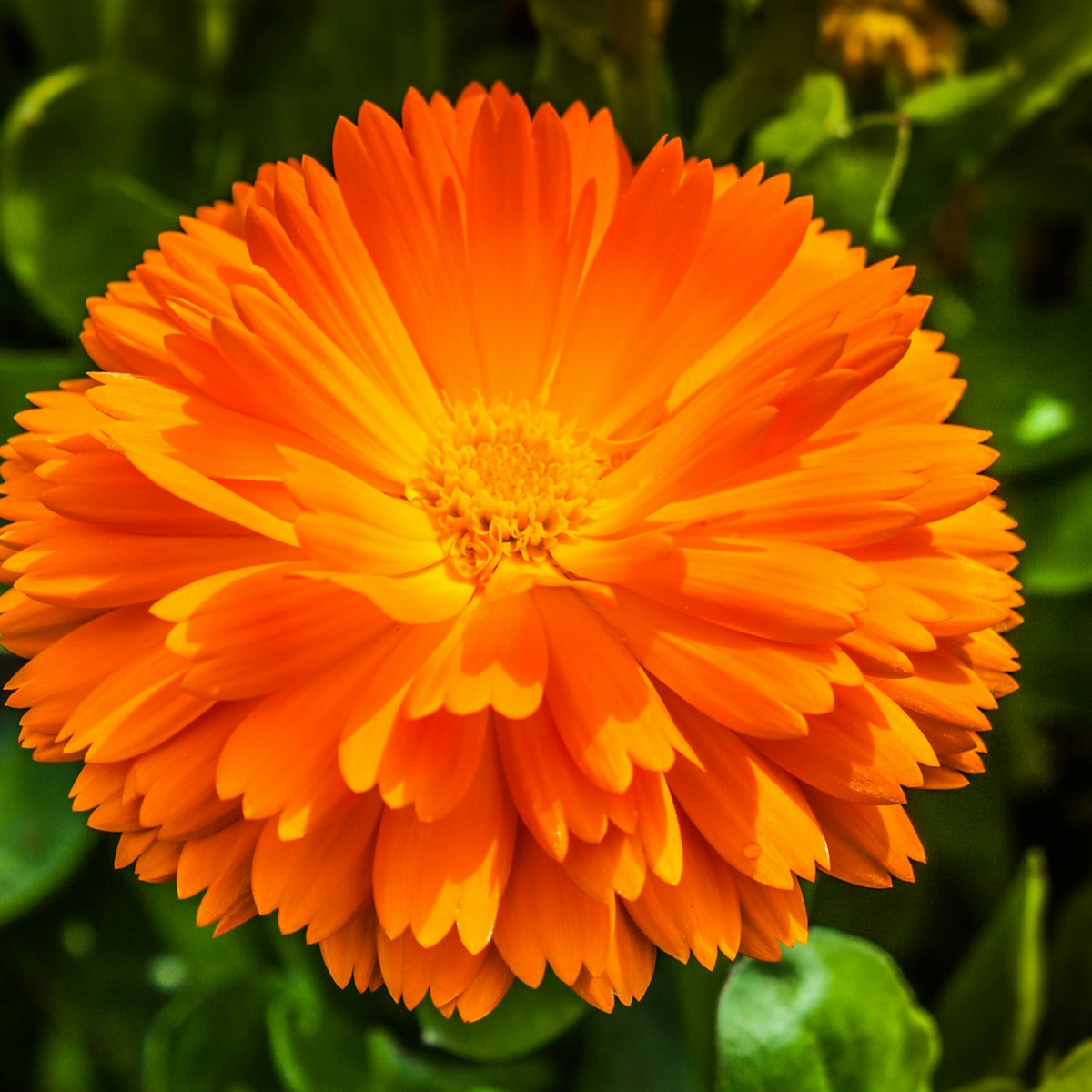Many years may have passed since Dan Brown's novel The Da Vinci Code and the subsequent film came out, but floods of visitors still descend on Scotland's most beautiful and enigmatic church – Rosslyn Chapel.
History
Rosslyn Chapel was built in the mid-15th century for William St Clair, third prince of Orkney, and the ornately carved interior – at odds with the architectural fashion of its time – is a monument to the mason's art, rich in symbolic imagery and shrouded in mystery.
The carved stones
As well as flowers, vines, angels and biblical figures, the carved stones include many examples of the pagan Green Man; other figures are associated with Freemasonry and the Knights Templar. Intriguingly, there are also carvings of plants from the Americas that predate Columbus' voyage of discovery. The symbolism of these images has led some researchers to conclude that Rosslyn is some kind of secret Templar repository, and it has been claimed that hidden vaults beneath the chapel could conceal anything from the Holy Grail or the head of John the Baptist to the body of Christ himself.
The Apprentice Pillar
The beautiful Apprentice Pillar is at the Lady Chapel's entrance. Four vines spiral around the pillar, issuing from eight dragons' mouths. At the top is an image of Isaac, son of Abraham, upon the altar.
Lucifer, the Fallen Angel
At head height in the Lady Chapel, to the left of the second window from the left, is Lucifer, the Fallen Angel. The bound, upside-down angel is a symbol associated with Freemasonry. The arch is decorated with the Dance of Death.
The Green Man
On the boss at the base of the arch between the second and third windows from the left in the Lady Chapel is the Green Man. It's the finest example of 100-plus carvings of this pagan symbol of spring, fertility and rebirth.
Indian corn
The frieze around the south wall's second window is said to represent Indian corn (maize), but it predates Columbus' voyage to the New World. Other carvings resemble aloe vera, found in Africa and Asia.
The Apprentice
High in the southwestern corner, beneath an empty statue niche, is the head of the stonemason's apprentice. Apparently the Apprentice Pillar he created was so exquisitely carved that the mason jealously murdered him. The worn head on the side wall to the left is his grieving mother.
The ceiling
The spectacular ceiling vault is decorated with engraved roses, lilies and stars; look for the sun and moon.
Rosslyn Chapel and The Da Vinci Code
When Dan Brown chose Rosslyn Chapel as the setting for the climax of his best-selling novel The Da Vinci Code, he was referencing its alleged links to the Knights Templar and the Freemasons. Templar and Masonic symbols can be found among the carvings, and a descendant of its founder, William St Clair, was a Grand Master Mason. Rosslyn is indeed a coded work, written in stone, but its meaning depends on your point of view. See The Rosslyn Hoax? by Robert LD Cooper for an alternative interpretation of the chapel’s symbolism.
Visiting Rosslyn Chapel
Visits are by 90-minute timeslot only and must be booked in advance online. The chapel is owned by the Scottish Episcopal Church and services are still held here on Sunday mornings.
The chapel is on the eastern edge of the village of Roslin, 7 miles south of Edinburgh's center. Lothian Bus 37 to Penicuik Deanburn runs from Edinburgh's West End to Roslin.
